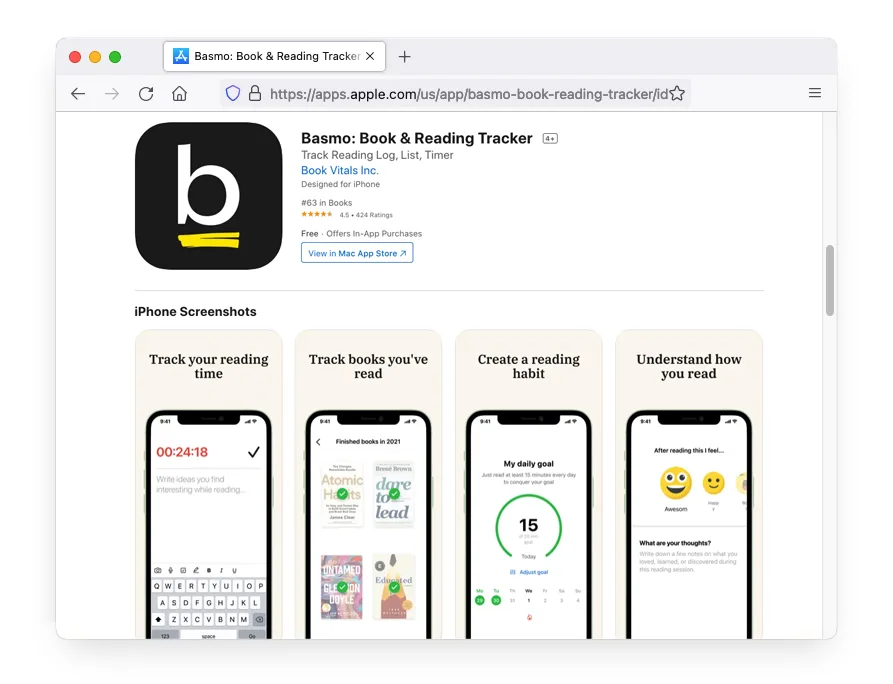A book clutter in your home has a negative effect on several aspects of your life. We all know the struggle and people have been trying to come up with solutions for ages. Getting rid of the pile of books on your nightstand or your bookshelf may come at a high price if you go about it using Marie Kondo’s strategy, but it does help out a lot.
The KonMari organizing books method has been appraised and has grown in popularity quite a lot in the last couple of years. The KonMari bookshelf tips or the decluttering strategy work well, but come with a couple of flaws. Let’s explore them all below.
What does Marie Kondo say about getting rid of books?
As many of you already know, Marie Kondo is the ultimate source of organizational ideas and she has made a name for herself by writing books about tidying up strategies and being the most well known and appreciated organization consultant.
She is the one who came up with the KonMari organizing method, probably one the most popular concepts on the subject. The KonMari method is an organizing method that focuses on cleaning up your living space by category, not by location. Therefore, it’s only natural to say that the KonMari method can be applied to books as well as clothes and any other possessions.
The principle of the Marie Kondo approach to tidying up is relatively simple: you should remove from your living space any object that doesn’t spark joy when you hold it in your hand. The same principle is applied in her book decluttering strategy. Marie Kondo suggests holding on just to the books that spark joy, are still unread, or have sentimental value.
How many books does Marie Kondo say to keep?
The general rule of thumb of the method developed by Marie Kondo on books organization is that no more than 30 books should be kept in a living space. So, how is Marie Kondo organizing books? By removing all excess.
Considering that books can’t be organized the same way as clothing, for example, the rules of Marie Kondo’s method are a little more flexible though. While she suggests that 30 is an acceptable number of books you can keep in your home without cluttering it, she does admit that this figure doesn’t necessarily have to be exact.
More books can be part of your collection, especially if they are still unread or if they have a special sentimental value. The important thing to remember is that they need to be neatly placed around your house, preferably in different locations (some on a bookshelf in one of the rooms, others in a box in a closet, one or two on your nightstand).
We know, for a book lover, selecting only 30 titles to keep in your home sounds like an impossible mission. Luckily for you, there is one amazing alternative: pairing the KonMari method with Basmo.
Basmo is a reading tracking app that serves a lot of purposes in a reader’s experience. One of those is to provide you with the possibility of creating an unlimited set of reading lists. You can personalize them however you see fit and create your own book collection right on your phone.

Instead of keeping all of your books on a bookshelf, you can easily create your digital book collection, store your already read books in a box and save your bookshelf space for unread books or those that you like in particular for example.
How do you organize books using the KonMari method?
The Marie Kondo bookshelf organization strategy, the aforementioned KonMari method, is quite an easy task to achieve if you follow a couple of steps. Like with anything else she does, Marie Kondo made sure to present her tips in the simplest and most structured ways possible.
Here is how organizing your bookshelves with the KonMari method is supposed to go:
1. Put every single one of your books in a pile on the floor
This includes books you have stored, books on your shelves, nightstand. The concept she coined for this purpose was “taking things out of hibernation”. Of course, if you are a true bookworm and own an impressive collection, piling them all at once will prove to be close to impossible.
Marie Kondo knows this and has a solution as well: separate your books in categories and create separate piles for each:
- General books
- Practical books
- Visual books
- Magazines
- Children’s books
2. Take each book in your hand and see if it sparks joy
The starting assumption of the KonMari method is that you are about to get rid of everything. Then, one by one you handpick items you can’t part ways with for several reasons. Create additional piles for the books you want to keep and those you no longer want to own.
When it comes to books, you will have to battle thoughts like “I haven’t read this one yet, but I might want to read it someday”.
Marie Kondo has a tough comeback: “Sometimes means never”.
If you had a book lying on a bookshelf for a while and planned to read it or re-read it and you haven’t done it already, you are most likely never going to get around to it.
Lose it!
Unless a book has a powerful memory attached and gives you butterflies in the stomach at least to a certain extent, you shouldn’t have it in your house.
3. Remove the ones that don’t spark joy from your home
After you go through all your piles and have created just the “keep” and “don’t keep” piles, it’s time to decide what you want to do with the books you no longer need.
The best thing to do would be to donate them, either to a library or a second hand book store or even a struggling school. Make sure to make this process as simple as possible for you, because parting ways with most of your book collection is going to be tough enough.
4. Find ways to store your remaining books
Now that you’re only left with a handful of books (30 if you want to follow Marie Kondo’s advice to the tee), it’s time for you to find a way of storing them in your house without creating any clutter.
Marie Kondo recommends the upright or standing position for books as the more practical solution for the “KonMari bookshelf”, but that is something that has more to do with the way your space is designed and your personal taste – a mix of standing and stacked books may even look better on a bookshelf.
Use Marie Kondo’s books method with Basmo for better results
Now that you know the four necessary steps you need to go through to successfully apply the KonMari strategy for organizing your books, it’s time to let you know that the method can be improved with a bit of help from Basmo, the ultimate reading tracking app.
As I mentioned earlier, the main advantage of using Basmo when it comes to organizing your bookshelves is that you can create your digital book collection easily and quickly. This would allow you to have a clear idea about the books you’ve read and plan to read in the future.
On top of this, by pairing the KonMari method with Basmo, you can also maintain the tidiness you just managed to achieve. You can easily keep track of the titles on your bookshelves or nightstand, move them from one category to another (to read – finished/did not finish for example) and adjust your physical book collection to the way you organized it on your phone with Basmo.
What Marie Kondo’s ‘Tidying Up’ Gets Wrong About Books?
Nothing is perfect. And despite what all her fans will tell you, neither is Marie Kondo’s tidying up method. When it comes to books at least, the KonMari method has a couple of flaws that many book lovers simply cannot accept.
While the method may be perfect for clothes and other objects, things are a little different when it comes to books.
Books are more than simple objects
One thing everyone needs to understand is that books are not just simple objects. From a book lover’s perspective, there is no single book in their collection they don’t have a connection with. We remember when we bought the book, how we felt walking home from the store anxious to start reading it, what we experienced reading it. Yes, not all books are masterpieces, but they all have a story and they all represent something in our life.
Books have sentimental value
Let’s make an assumption that a father buys his daughter a book on every birthday starting when she turns 10. By the time she is 30, living in her own apartment, she would have gathered 20 very special books only as gifts from her father, not including anything else she might have bought for herself or received as gifts from other important people in her life. That is already two thirds of what Marie Kondo finds acceptable.
The sentimental value we attribute to books is not really negotiable and that is perfectly normal. Whether it’s the memory of who bought them for us, how we felt reading them or something they remind us of, something makes a lot of our books particularly special for us.
You are not done with books as soon as you’ve finished them
A book’s role in your life isn’t over as soon as you finish reading it. Not only will you remember and use the lessons you learn from each book, but you are likely to sometime want to re-read a certain part of a book to remember the story, or to find a quote you love and forgot.
These are actually also some other things Basmo can help with. The app will allow you to keep a reading journal where you can jot down your thoughts about the books you read, to take notes while reading or even to save quotes. They can all be formatted however you see fit and remain saved within the app. You can easily search through them whenever you want to remember something.
When it comes to quotes, things are even better: the app allows you to scan the pages of a book, extract the text and turn it into a customizable image you can later share on social media.
Give Your Reading Experience
An Extra Boost With Basmo
Track the books you read, monitor the time you spend reading and keep notes on your reading habits and how it makes you feel. You can set yourself targets for the time you spend reading and you can get notified whenever you’re behind on your reading time.
But even so, one other thing Marie Kondo’s method for books doesn’t take into consideration is that for a parent, one of the happiest sights is to see their child enjoying the same exact book the parent loved as a kid. Nothing can replace that, and that is why the KonMari method only works to a certain extent when it comes to books: you never actually know WHEN a book is going to spark joy.
Final thoughts
Keeping your house tidy with the KonMari organizing books method may turn out to be challenging. If you manage to power through the whole process and manage to set your emotions aside, the result is always going to be amazingly rewarding.
The KonMari bookshelves are an amazing sight and will certainly improve your living space. Use Basmo to soften the blow of the KonMari method and achieve the best possible results!







